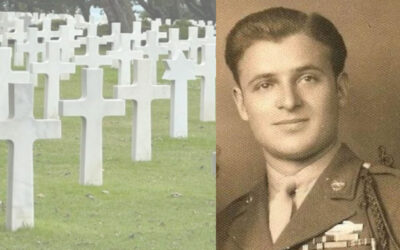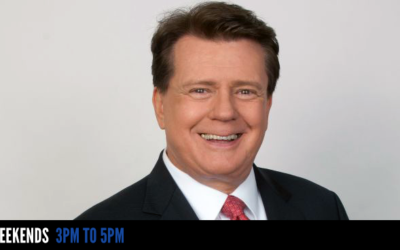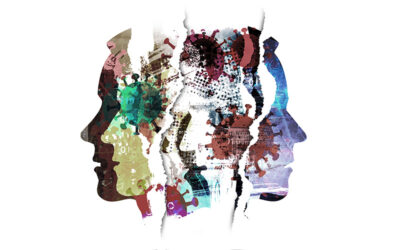Carlos presented in the clinic, walking stiffly. He wore a green asbestos suit and steel toed boots. The distinctive chemical smell of the steel mill where he worked clung to him like a second skin. Carlos is a welder. He wields a blow torch for most of his day. Large pieces of steel hanging from gigantic chains and pulleys circle above and around him. One by one, he maneuvers them into a position where he can begin the fiery work of melting them down and reshaping them.
There are open fires in the big, hangar-like space where Carlos works. A toxic cloud hangs over the building, penetrating the clothing and skin of all who are exposed. The ground shakes every 15 minutes or so from a machine in the next building as it pounds tons of molten steel into new forms. After awhile, one doesn’t notice these little earthquakes. They just blend in with the sounds of saws, trucks and the loud whistles that signal break time.
The work is tough but lucrative, especially for a recent arrival from Mexico. A union job. Seventeen dollars per hour, English not required. But it takes a toll on the body. One day, after three years on the job, Carlos bent over to pick up his blow torch and felt a sharp lower back pain that radiated into his right buttock. It was enough to stop him from going on. He reported the injury to his supervisor, who filled out a work injury report and sent Carlos to the clinic where I work to be examined and treated. While Carlos was glad to get the medical attention, he was also thinking about missed time from work, lost pay and his family. As there were rumors that another round of layoffs was coming, he was feeling very anxious.
A tale of two clinics
I have been in practice for almost 30 years.
On Mondays, Wednesdays and Fridays, I work out of a lovely old Victorian on Union Street, in the upscale Cow Hollow neighborhood of San Francisco. I treat a lot of tech workers; young people in their twenties though forties who spend long days hunched over their computers. They are well educated, most with college and many with graduate degrees. They generally use health insurance and find me through their health plan websites, cross referenced by social media sites like Yelp. Some are referred by friends.
Because they have selected/chosen me to be their provider, they are receptive to my recommendations and care.
On Tuesdays and Thursdays, I work in an occupational medical center. In this clinic I treat workers who have been injured on the job. There, I work as part of the California Workers Compensation system. Rather than computer workers, there I treat industrial workers—men who work on beer delivery trucks hauling kegs, firefighters who carry heavy hoses up and down stairs, and maids who spend all day on their knees, bent over, lifting mattresses and cleaning bathrooms.
First impressions matter
At the occupational med center, I am part of a team. I work with medical doctors, nurses, physical therapists, acupuncturists and medical technicians.
After the injured worker is hurt on the job and has reported the injury to his or her supervisor, they are sent to our clinic for evaluation and treatment. They first see a medical doctor or nurse practitioner who acts as their primary provider. He or she is the “gatekeeper” for the patient. If the injury is deemed a chiropractic case (as most back injuries are), the patient is referred to me.
I meet the patient in the waiting room, and usually call their name. My examination begins immediately. I notice how they rise from their chair. Is it with ease or difficulty? Are they walking slowly or fluidly?
Then, I look at their face. One can learn so much from a face. Are they smiling? Are they looking directly at me or at the floor as they approach? And if they are looking at me, is it with openness or suspicion? Are they communicating distress?
Depending on how they appear, my introduction will vary. But as a rule, I smile.
“Hello,” I say. “I’m Doctor Fishman. It’s nice to meet you.” I shake their hand. If I see significant pain in the patient’s demeanor and/or their face, I will modify my greeting, and let them know with my words and my body language that I see they are in pain and that I am here to help them.
Touch and gaze immediately connect you to the patient.
The psychology and sociology of work injuries
Many of the patients who come to the work injury clinic are resentful and suspicious. They have not chosen us as their doctors; they have been sent by their employers. We have contracted with the employer and insurance carrier. We are their designated practitioners, whether they want to see us or not. (There is a cumbersome process whereby one can find and chose another doctor/clinic but most of the patients don’t know this and do not have the wherewithal to make a change.)
Many of their workplaces are difficult, even hostile environments where workers and managers do not get along. Therefore, a referral by someone at the company is often perceived as representing management–and therefore in opposition to the interests of the worker.
And this is what I sometimes see in the eyes of my patients as they rise from the seats in the waiting room.
When I greet them, shake their hand and smile at them, I hope to see a relaxation; a drop of their shoulders. In that relaxation there is a softening. And with this softening comes an opening, and a receptivity, that will support their healing.
The hierarchies of life…a philosophical digression
We live in a hierarchical world. But these hierarchies are not natural; They are structures that have been created to support power.
Because we model the world around us, many of our relationships, both individual and societal, mirror these structures.
The doctor-patient relationship is one of them. Power between a doctor and patient is not shared. The doctor stands above the patient, holding the power to heal them. The doctor diagnoses and treats. The patient receives.
Usually the patient has internalized this mind set (as has the doctor). When patients walk in for treatment they stand beneath the authority figure: in this case the medical provider. In a white coat, with a stethoscope around his or her neck, the doctor represents purity and science. By association the doctor becomes another authority figure standing above the patient/worker—like the bosses, landlords and police who always remind the worker that he or she is somehow “less than” they are.
My work is to challenge this dynamic.
The doctors job
The first job of a health care provider is to empathize: to assess the emotional and physical state of their patient.
It is here that the doctor shifts from health care provider to healer: when he or she drops the pretense of hierarchy and looks at the patient with eyes and heart open. With equanimity. This is the space in which healing occurs.
In addition to equanimity, healing is deepened when the patient is held at the center of care. Too often the patient is seen as a passive recipient of the doctor’s expertise. The practitioner, as “expert,” is focused on what he or she can do, rather than on what the patient necessarily needs. This is especially true in a traditional medical setting where all patient referrals remain within the allopathic frame. The primary doctor is much more inclined to refer the patient to an orthopedist or neurologist rather than to a chiropractor or an acupuncturist
If a doctor is focused on what a patient truly needs, he or she will be more willing to acknowledge the limitation of their modality and be ready to refer. This first requires that medical doctors understand complementary therapies like chiropractic, pilates, massage therapy and others. This also means that the complementary practitioners must realize the value of allopathic medical interventions such as anti-inflammatory and pain medications, cortisone injections or even surgery.
The healing power of integration
If each practitioner/participant in the therapeutic chain–from receptionist to licensed vocational nurse to chiropractor to medical doctor–understands these fundamental principles, and really gets who the patient is–what are their needs, desires and fears–a true integration of care is possible.
To connect with each patient as closely to the core of their being as possible, is to open the clearest path to the deepest level of healing.
Carlos saw the medical doctor who prescribed anti-inflammatory medication, and determined that he would do well with a course of chiropractic care. This is how he was referred to me. I knew that Carlos had a limited understanding of English so I addressed him in Spanish. This put him at ease. And before I laid my hands on Carlos, I listened to his story. He told me what he did on his job, what had happened and– after a while–what his fears were.
It was essential that Carlos knew he was being heard. At that point we went through range of motion, orthopedic and reflex testing. I felt the tension in his back muscles and the motion in his spinal joints. Based upon the results of my history and exam I treated Carlos with spinal and muscle manipulation and talked to him about exercise: the need to do core strengthening to brace and protect his lower back.
After six visits with me, Carlos’ pain had been reduced by 70 percent. After re-evaluation with the medical primary, he was then transferred to physical therapy for advanced strengthening. After six treatments he was released as pre-injury with instructions to continue his exercise in an ongoing manner.
Carlos was initially skeptical and suspicious. He worried that our medical clinic was “in cahoots” with his employer and the insurance company. But he then came to see that we were a unique integrative clinic that employed a variety of therapies in a way to get him back to work and reassured him with our actions that we were working for him.
Even after Carlos was discharged from my care, I would always greet him when I saw him in the waiting room. “Hola Carlos. Como estas?” Hello Carlos. How are you? “Muy bien. Mucho mejor!” Very well. Much better!
There is great power in a smile. Just as there is great power in applying the right therapy to the right person at the right time. The deepest healing takes place when all of these powers are aligned.
Dr. Ricky Fishman has been a San Francisco based chiropractor since 1986. In addition to the treatment of back pain and other musculoskeletal injuries, he works as a consultant in the field of health and wellness with companies dedicated to re-visioning health care for the 21st century.
ricky@rickyfishman.com www.rickyfishman.com












